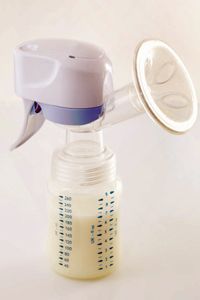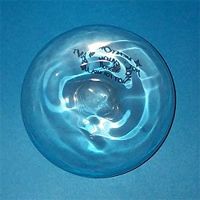If milk does a body good, then breast milk does a baby's body very good. A mother's milk supply is made-to-order nourishment, continuously adjusting based on her baby's needs. Studies show that breast milk lowers occurrences and severity of many infectious diseases in babies, as well as conditions like diabetes, obesity and asthma [source: American Academy of Pediatrics]. The American Academy of Pediatrics now recommends that a woman breastfeed exclusively for the first six months of her baby's life (continuing for the entire first year if possible). But what if breastfeeding isn't feasible for a new mother?
Some moms desire all the health benefits that breast milk has to offer, but for one reason or another aren't able to breastfeed 100 percent of the time. A breast pump allows a woman the opportunity to feed a premature baby or multiple babies her own milk. She can also maintain her milk supply if she's currently on medication -- rather than passing the medication to the baby, the mother pumps the milk and pours it out, which helps her body keep producing milk until it's safe to nurse again. Most commonly, breast pumps allow moms to return to the workforce or get in some me-time, sans baby.
Advertisement
Pumps offer mobility and convenience for parents who prefer to stick with breast milk rather than switch to formula. And although breast pumps today seem as pervasive as baby monitors and Diaper Genies, electric versions didn't make an appearance outside of hospitals until the 1990s. The dairy industry -- specifically a 19th-century milking machine that used a pulsating vacuum and double-chambered teats to stimulate milk production -- served as inspiration to mechanical breast-pump inventors [source: Bazelon, Encyclopedia of Australian Science]. Engineer and chess master Edward Lasker patented a mechanical breast pump in 1927 to help save the lives of many premature babies too weak or sick to nurse. Less than 30 years later, Einar Egnell and Olle Larsson teamed up to create a more effective, comfortable mechanical pump [source: Bazelon].
Whether you prefer the motorized version or the manual, do-it-yourself variety, breast pumps can be a saving grace for mothers who must work and/or those with low milk supplies. These mammary marvels also allow fathers to become part of the feeding process, help reduce engorgement (the painful condition that occurs when breasts are overfull) and can pull out flat or inverted nipples. So why doesn't every baby skip the nip and hit the bottle for breastmilk? We'll learn why breast pumps aren't perfect for everyone, and how to decide which one would be a good fit for your lifestyle.
Advertisement





